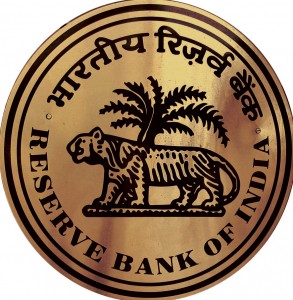 New Delhi/Mumbai, June 2 (IANS): Major stakeholders of the Indian economy, especially the government, India Inc. and investment funds, welcomed the third policy rate cut announced by the apex bank on Tuesday.
New Delhi/Mumbai, June 2 (IANS): Major stakeholders of the Indian economy, especially the government, India Inc. and investment funds, welcomed the third policy rate cut announced by the apex bank on Tuesday.
The Chief Economic Adviser to the government, Arvind Subramanian said: “These cuts are consistent with the trends in the economy, including strongly declining inflation, contained current account deficit and ongoing strong fiscal discipline.”
The government has contained the fiscal deficit at four percent of the GDP (gross domestic product) during 2014-15, beating its own financial target of 4.1 percent.
Subramanian was followed in welcoming the rate cut by industry lobby Confederation of Indian Industry (CII), which said the move reinforces the perception that the government and the Reserve Bank of India (RBI) are working to take the economy to a higher pedestal of growth.
“Many stalled projects, which are waiting for availability of credit at cost effective rates, would find it viable to restart operations if the RBI continues with its rate easing cycle,” said Chandrajit Banerjee, CII director general.
“A reduction in interest rates would also provide a fillip to automobiles and the capital goods sector which are experiencing a gradual recovery.”
However, other leading industry chambers, the Associated Chamber of Commerce and Industry of India (Assocham), said the cut in interest rate is too little and too late to infuse the consumer demand which should then induce investment.
“Governor Rajan himself has acknowledged that investment in the economy is weak and corporate results poor, but still he has refrained from taking somewhat bolder steps,” said Rana Kapoor, president of Assocham.
“It is time growth is given the focus. Otherwise, growing at the fastest rate in the world in terms of GDP ahead of China, would only remain a hype.”
According to Kapoor, at least 50 basis points cut in the repo rate was required along with a reduction in the cash reserve ratio (CRR) so that banks are able to reduce their cost of funds.
“Moreover, the problem of stressed assets has also a relationship with the interest burden that the promoters have to bear. Servicing high debt with high cost of borrowing becomes unviable,” Kapoor said.
PHD Chamber of Commerce and Industry expressed the view that there must be an aggressive move to cut repo rates as demand scenario and industrial growth are in severe slowdown.
“Repo rate must not be more than 6 percent to induce demand and refuel industry growth at this juncture,” said Alok B. Shriram, president, PHD Chamber of Commerce and Industry.
“The industry must be facilitated to grow in double digits to achieve the desired objectives of ‘Make in India’,” he said.
Shriram added that there must be transmission by the banks of the front loaded repo rate cut by RBI to the lending rates.
Debopam Chaudhuri, chief economist and vice president of research at ZyFin Research, said that the RBI outlook appears cautionary, suggesting a pause in expansionary policy for sometime hereon.
“Today’s cut of 25 basis points is not expected to make loans cheaper enough to entice demand. This may have a negative impact on an otherwise healing consumer confidence with Indian consumers being most confident compared to their counterparts in other major emerging economies,” Chaudhuri said.
Mihir Vora, director and chief investment officer with Max Life Insurance, said that the RBI has taken the decision to address the growth imperative now and wait for further data on commodities and monsoon to decide on subsequent actions.
“It has also been highlighted that some PSU (public sector undertakings) banks will need capital if they are to support lending as investment revives,” Vora said.
Kunal Shah, fund manager of debt at Kotak Mahindra Old Mutual Life Insurance, predicted that if the food inflation remains under control, then the RBI can ease further, bond yields in such case will drop below 7.5 percent.
“In near term, yields will remain in the narrow range with upward bias and take cues from monsoon performance and international energy prices,” Shah said.
Dinesh Thakkar, chairman and managing director with Angel Broking, said that the food grain production for 2014-15 coupled with the non-availability of buffer stocks for pulses and oil seeds would result in inflationary pressures from August 2015.
“However, in our view, proactive government measures on food grains supply may result in inflation surprising positively, which would then provide room for more rate cuts post monsoon,” Thakkar said.
The RBI announced a 25 basis points cut in the repo-rate from 7.5 percent to 7.25 percent in its bi-monthly monetary policy review.
